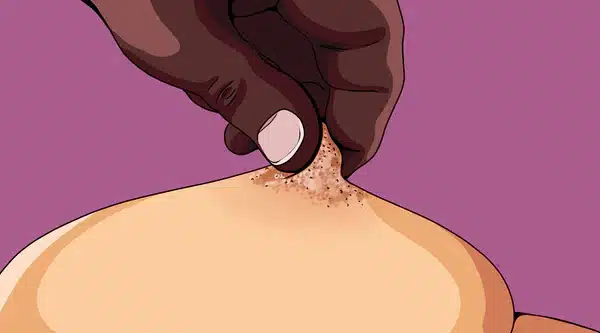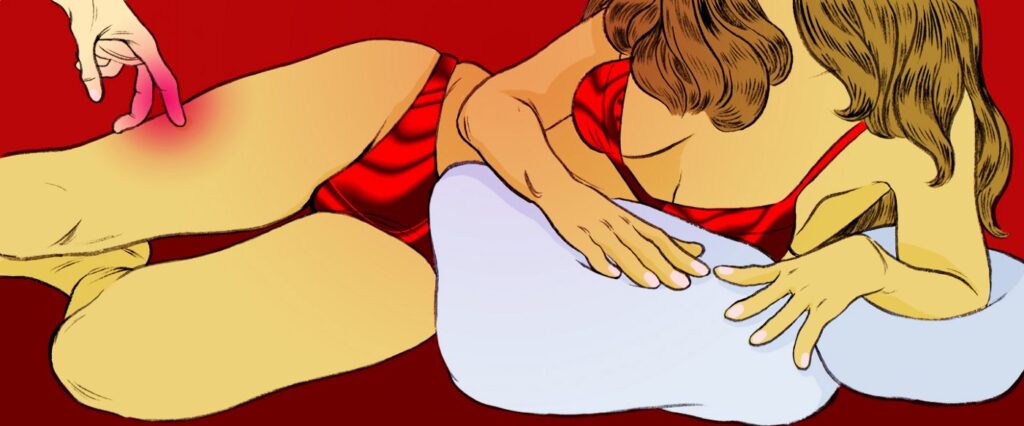13 Things to Know About Female Orgasms, Including How to Find Yours. According to the American Psychological Association, an orgasm is when a person reaches peak pleasure. The body releases tension, and the perineal muscles, anal sphincter, and reproductive organs rhythmically contract.
Table of Contents
Males will usually ejaculate when reaching an orgasm and females will experience vaginal wall contractions. Females may also ejaculate during sexual activity or when experiencing an orgasm.
13 Things to Know About Female Orgasms, Including How to Find Yours
1. Is this a certain type of orgasm?
No, “female orgasm” is an all-encompassing term for any type of orgasm related to female genitalia.

It could be clitoral, vaginal, even cervical or a mix of all three. That said, your genitalia isn’t your only option when it comes to achieving the big O.
Read on for tips on where to touch, how to move, why it works, and more.
2. It can be a clitoral orgasm
Direct or indirect stimulation of the clitoris can lead to a clitoral orgasm. When you get your rub on just right, you’ll feel the sensation build in your pleasure bud and peak.
Try this: Your fingers, palm, or a small vibrator can all help you have a clitoral orgasm.
Make sure your clitoris is wet and begin gently rubbing in a side-to-side or up-and-down motion.
As it begins to feel good, apply faster and harder pressure in a repetitive motion.
When you feel your pleasure intensify, apply even more pressure to the motion to take yourself over the edge.
3. It can be a vaginal orgasm
Although few people are able to climax with vaginal stimulation alone, it sure can be fun trying!
If you’re able to make it happen, prepare for an intense climax that can be felt deep inside your body.

The front vaginal wall is also home to the anterior fornix, or A-spot.
Older research suggests that stimulating the A-spot can result in intense lubrication and even orgasm.
Try this: Fingers or a sex toy should do the trick. Since the pleasure comes from the vaginal walls, you’ll want to experiment with width. Do this by inserting an extra finger or two into the vagina, or try a sex toy with some extra girth.
To stimulate the A-spot, focus the pressure on the front wall of the vagina while sliding your fingers or toy in and out. Stick with the pressure and motion that feels the best, and let the pleasure mount.
4. It can be a cervical orgasm
Cervical stimulation has the potential to lead to a full-body orgasm that can send waves of tingly pleasure from your head to your toes.
And this is an orgasm that can keep on giving, lasting quite a while for some.

Your cervix is the lower end of your uterus, so reaching it means going in deep.
Try this: Being relaxed and aroused is key to achieving a cervical orgasm. Use your imagination, rub your clitoris, or let your partner work some foreplay magic.
The doggy-style position allows for deep penetration, so try being on all fours with a penetrative toy or partner.
Start off slow, gradually working your way deeper until you find a depth that feels good, and keep at it so the pleasure can build.
5. Or a mix of all the above
A combo orgasm can be achieved by pleasuring your vagina and clitoris simultaneously.
The result: a powerful climax that you can feel inside and out.

Be sure to supersize your combo by adding some other erogenous zones to the mix.
Try this: Use both your hands to double your pleasure, or combine fingers and sex toys. Rabbit vibrators, for example, can stimulate the clitoris and vagina at the same time and are perfect for mastering the combo orgasm.
Use parallel rhythms while playing with your clitoris and vagina, or switch it up with fast clitoral action and slow vaginal penetration.
6. But you can O from other stimulation, too
The genitals are awesome, but they’re not your only option. Your body is full of erogenous zones with orgasmic potential.
Nipple
Your nipples are full of nerve endings that can feel oh-so-good when played with.
According to a 2011 study, when stimulated, your nipples set your genital sensory cortex ablaze. This is the same area of the brain that lights up during vaginal or clitoral stimulation.

Nipple orgasms are said to sneak up on you, then explode in waves of full-body pleasure. Yes, please!
Try this: Use your hands to caress and squeeze your breasts and other parts of your body, avoiding the nipples at first.
Move on to teasing your areola by tracing it with your fingertips until you’re really turned on, then show your nipples some love by rubbing and pinching them until you reach maximum pleasure.
Anal
You don’t need to have a prostate to have an anal orgasm. Anal play can be pleasurable for anyone if you have enough lube and take your time.
You can indirectly stimulate erogenous zones within the vagina using a finger or sex toy.
Try this: Apply ample lube with your fingers and massage it around your anus. This won’t just lube you up it’ll also help get you ready for anal play.
Massage the outside and inside of the opening, then slowly and gently insert your sex toy or finger into your anus. Try a gentle in and out motion, then begin to move in a circular motion. Alternate between the two and pick up the pace as your pleasure builds.
Erogenous zones
Your body really is a wonderland. The neck, ears, and lower back, for example, are rich in erotically charged nerve endings begging to be touched.

We can’t say exactly which parts of your body will drive you to the brink, but we can tell you that everyone has erogenous zones, and finding them is definitely worth the effort.
Try this: Take a feather or silky scarf and use it to find your body’s most sensitive areas.
Get naked and relax so you can focus on every tingle. Take note of these spots, and try experimenting with different sensations, like squeezing or pinching.
Practice makes perfect, so pleasure these areas and keep at it to see how far you can go.
7. Where does the G-spot come in?
The G-spot is an area along the front wall of your vagina. For some people, it can produce a very intense and very wet orgasm when stimulated.

Your fingers or a curved G-spot vibrator are the best way to hit the spot. Squatting will give you the best angle.
Try this: Squat with the back of your thighs close to or touching your heels, and insert your fingers or toy into your vagina. Curl your fingers up toward your belly button and move them in a “come here” motion.
If you happen to find an area that feels especially good, keep going — even if you feel like you have to pee — and enjoy the full-body release.
8. What happens in the body when you orgasm? Does this depend on the type?
Every body is different, and so are their orgasms. Some are more intense than others. Some last longer than others. Some are wetter than others.
What physically happens during orgasm is:
- Your vagina and uterus contract rapidly.
- You experience involuntary muscle contractions in other parts, like your abdomen and feet.
- Your heart rate and breathing quicken.
- Your blood pressure increases.
You may feel a sudden relief of sexual tension, or even ejaculate.
9. What makes a female orgasm different from a male orgasm?
It may be surprising, but they’re not all that different.
Both involve increased blood flow to the genitals, faster breathing and heart rate, and muscle contractions.
Where they typically differ is in duration and recovery — also known as afterglow.
Female orgasm may also last longer, ranging from 13 to 51 seconds on average, while male orgasm often ranges from 10 to 30 seconds.
People with a vagina can typically have more orgasms if stimulated again.

People with a penis typically have a refractory phase. Orgasms aren’t possible during this period, which can last from minutes to days.
People with a clitoris may also go through a similar phase. A 2009 study involving 174 university students found that 96 percent of female participants experienced hypersensitivity in the clitoris following orgasm.
Remember, the range of the refractory phase varies from person to person. Your own experience is unique to you.
Then there’s ejaculation. For a person with a penis, contractions force semen into the urethra and out of the penis. And speaking of ejaculation…
10. Is female ejaculation a thing?
Yes! And it’s a fairly common thing.
A 2013 research review of female ejaculation found that more than 10 to 54 percentTrusted Source of participants experienced ejaculation during orgasm.

Ejaculation occurs when fluid is expelled from your urethral opening during orgasm or sexual arousal.
The ejaculate is a thick, whitish fluid that resembles watered-down milk. It contains some of the same components as semen.
11. What’s the orgasm gap?
The orgasm gap refers to the gap between the number of male and female orgasms in heterosexual sex, where those with female genitalia are getting the shorter end of the stick.
A 2018 study on orgasms in heterosexual newlywed couples found that 87 percent of husbands and only 49 percent of wives reported consistently experiencing orgasms during sexual activity.

Why the gap? Researchers don’t know for certain. Some argue it could be biological, while others blame cultural and societal perspectives and a lack of education when it comes to pleasure.
12. I don’t think I’ve orgasmed before, but I want to — what can I do?
If you have a clitoris or a vagina, you know that real-life orgasms can be pretty different from what they show on TV.
The first thing you should do is take the pressure off so you can enjoy yourself.
Instead, take the time to get to know your body and concentrate on how it feels.
You may find it helpful to:
- get comfy somewhere you won’t be interrupted or distracted, like in your bed or the bath
- try reading an erotic story or using your imagination to get yourself in the mood
- massage the fleshy area above your clitoris and the outer and inner lips of your vulva until you begin to get wet, maybe also using lube
- start rubbing your clitoris over the hood and find a rhythm that feels good
- rub faster and harder, increasing the speed and pressure to intensify the feeling, and keep at it until you orgasm
If you don’t orgasm, you can always try again. Trying new things is the best way to figure out what turns you on and how to orgasm.
13. Should I see a doctor?
Some people orgasm more easily than others, so not having one doesn’t necessarily mean there’s something wrong.
If you feel like you’re having trouble climaxing or have other concerns, see a doctor or other healthcare professional who specializes in sexual health.

They can answer any questions you may have and may be able to make some recommendations.
Here is where we share source of knowledge (Life Hacks & Life Style ), Entertainment, Technology, Fashion, E-News and updates all over the world.
Keep on visit our website for more updates













